Some basic assumptions, and a little bit of anecdotal evidence, re: The Internet of Everything and Everyone:
We are at the beginning of what I describe as a “socio-technical Cambrian Era” in which sensor-broadcast data and analytics “at the edge” will (market sensibility notwithstanding) surge through industries and civic institutions, transforming once-traditional business models (undermining some, enlivening others). This has the potential to alter those industries, much as the ubiquitous Internet and the introduction of e-commerce changed brick-and-mortar businesses over the past two decades.
As with early e-commerce successes like eBay and Amazon (and stellar failures such as Webvan), the underlying principles of the new economy were initially difficult to predict/articulate until “best practices” emerged toward lucid definition. In this “socio-technical Cambrian Era” we find ourselves in a similar maturity curve, with all of the energy of adolescence and little wisdom. Gas/Electric companies modernize metering. Auto insurance companies gather gadget-enabled behavioral information to set rates. Nest, FitBit: there are lots of new ways to generate information, without many guiding principles.
Learning from the success of a single odd Idea
In what will surely become apocryphal, one city decided to embed sensors in the trash/recycling bins provided by the city’s waste management agency, guided by a general notion that full bins were the only ones that required collection. The obvious efficiency and cost reduction proposition was simple enough to understand. The stunning results were unexpected. Ultimately, the ROI for this project was indirect, benefits accrued in secondary business streams.
- For example, a shift from the standard “Empty Every Can on Scheduled Pickup Dates” to “Empty Only Those Cans that Need to Be Emptied” not only stabilized labor costs (initial proposition) but entirely eliminated over-time that subsequently allowed the agency to consider improvements in staffing, salaries, and benefits without additional fees or taxes.
- Fuel consumption for the fleet of lumbering garbage collection vehicles decreased in similar volume, so much so that the agency had the financial flexibility to improve vehicle maintenance without impact to their annual budget.
- Requests for replacement containers, sturdy but prone to wheel and lid breakage requiring unit replacement due to frequent impact, dropped significantly.
- And one additional benefit: the unusual consequence, at times of “reduced services” – overall customer satisfaction improved due to the personalized attention to each household’s specific needs.
The Conundrum
The remarkable “upside” of this initiative is most notable for the surprise, because (at the time) it was difficult for city leaders to predict, in advance, what might be possible until they reviewed the data. However, I believe that there are underlying principles at work, in much the same fashion demonstrated by our e-commerce experience, principles which, if elucidated, would point us in the optimal direction for next year’s modest city budgets.
Think of the oil drilling industry at the turn of the century. The absence of useful information forced speculators to drill hundreds of potential wells in order to tap the one underground deposit that profitably covered the speculative costs. (Modern example: venture capital.) Later, we learned how to analyze the geography, apply sonar tools (using existing technology in new ways) to identify optimal oil fields, and subsequently, shift the industry from Drill Hundreds, Find One (with all of the unnecessary cost) to Drill Where Oil Lives.
Profits exploded.
ROI Multipliers Everywhere
I believe there are equivalent opportunities in numerous industries that will be enabled (or overwhelmed) by our analysis of soon-to-be-available data streams. Further, I believe that current anecdotal successes are clear indicators of repeatable practices, where obvious multipliers serve as guideposts for civic and corporate decision-makers.
In other words, we have the option to systematically predict rather than haphazardly guess. I’ll offer two examples:
- In the Trashcan project of that single city, let us quantify the profits available for city re-investment as X. Now imagine the value multiplier when all of the metropolitan areas in the United States were orchestrated to implement a similar program. There are 19, 429 municipal governments in the US, as of December 2014. Multiply X by 19, 429 to project Potential Value.
- Let’s presume, for argument’s sake, that the basic business process of waste management containers is principled, rather than anomalous. Might similar benefits be derived by the shipping industry with their adoption of an “intelligent container” initiative (implementation of beacon technology, data gathering/analysis) that offers equivalent “upside” on a per-container basis? Let us quantify the profit available for port and railroad re-investment as X. In the United States, according to the Association of American Railroads (AAR), rail intermodal traffic tripled between 1980 and 2002 to 4.65 million containers. Multiply X by 4.65 million to project Potential Value.
In any discussion of the IoE potential for expanded city services – data-driven, service-oriented, network-aware, even for the loftier-yet-worthy goal articulated by Teilhard de Chardin (completely connected world as the next phase of mankind’s progress) – let’s not forget two very human errors that have historically undermined socio-technical progress:
- The largest potential multiplier (and consequent promise of value unleashed) is not represented, because 45% of the world’s population remains “in the dark,” without cell phones or network access. Whether they live in a Paraguay slum, remote Australian Outback or Appalachian village, a substantial percentage of our citizens have yet to connect, or benefit from such connectivity. Let us quantify the profits of intelligent objects and intelligent networks in billions of dollars. Multiply that benefit by 2x when everyone is physically, socially and economically capable of participation.
- Nor should we minimize the greatest risk for any data/analytics initiative: condescension. Big Data, even immense amounts of high-quality, artfully-integrated and beautifully displayed data, does not guarantee that complex problems will automatically be solved or economies will improve. Still needed, at every level of our urban and corporate institutions, is the good judgment that comes from an open mind. Hubris, like many other biases, can be the cultural equivalent of an anchor secured to our feet, slowly dragging us downward, even as we reach.
There is a brilliant secret to be found in our Trashcan Conundrum.
It is an economic principle that merits, in conclusion, our explicit attention: in an information economy, the benefit derived from a widely shared idea is greater than the value of an idea privately spoken. In contrast to Value in the Industrial Age, when the value of an object increases in proportion to its uniqueness (one Mona Lisa, one Pieta, one Hope Diamond), the fundamental principle of economic value (in an information economy) increases in proportion to its ubiquity. In our era, the value of data is quintessentially democratic, inclusive, open.
Should there be readers who question this principle, imagine this scenario: in our prototypical city: an early-in-the-planning decision by the City Council includes a limited (targeted) audience for new, chip-enabled cans, limited to the suburban residents in the wealthiest communities. Blackhawk yes, East Oakland no. Palm Springs yes, Peoria no. Boca Raton yes, Sebring no. If challenged, the Council leaders in this imagined scenario would surely cite taxpayer statistics, followed by the standard line of bias in public policy: safety and security concerns. In sociological research, this risk is called a Fundamental Attribution Error – an early assumption which, if left unchecked, will dramatically alter the outcome. In software engineering, the equivalent error occurs in the first binary selection (0/1) and is, often, the most difficult error to identify and correct during QA.
The brilliant secret in our Trashcan Conundrum is that the value of data gathered from one neighborhood’s trashcan is equal to any other, and the resulting efficiencies (cost savings, overtime reduction, lower fuel costs) apply equally to garbage collection in the badlands as in the upper east side, equally to Detroit and Manhattan, to the north and south sides of Chicago. Furthermore, maximum value (optimal outcome in the U.S.) can only be achieved when each of the 19, 429 metropolitan communities in the U.S. has access to (and contributes data from) the new cans.
The beautiful secret?
Closed systems produce limited results. Open systems, accompanied by optimized participation, produce maximum long-term benefit. As we begin to consider the many possible projects on our journey toward the Internet of Everything, let us not forget the “second E” because it is only when we have a fully-enabled society that we can reap the true benefit of intelligent networks in the public domain.
Long live the Internet of Everything and Everyone.

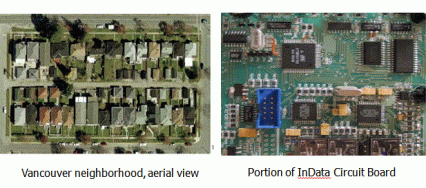 We construct our world in similar ways, we navigate between those structures in similar manner, with analogous challenges presented by traffic flow, commercial exchange, power consumption, and an ever-burgeoning need for additional storage in our neighborhoods and in our compute environments. We are nodes on our networks at both the physical and digital level, and we are relentlessly revising our legacy architectures to accommodate the new and evermore sophisticated risks to our physical and digital security without excessively compromising our freedom to move from place to place.
We construct our world in similar ways, we navigate between those structures in similar manner, with analogous challenges presented by traffic flow, commercial exchange, power consumption, and an ever-burgeoning need for additional storage in our neighborhoods and in our compute environments. We are nodes on our networks at both the physical and digital level, and we are relentlessly revising our legacy architectures to accommodate the new and evermore sophisticated risks to our physical and digital security without excessively compromising our freedom to move from place to place.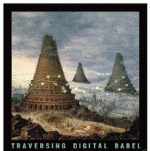

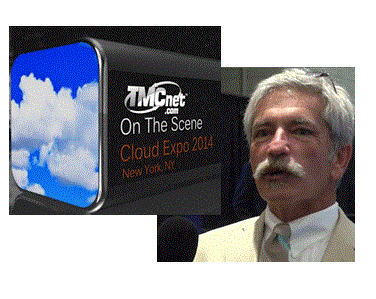
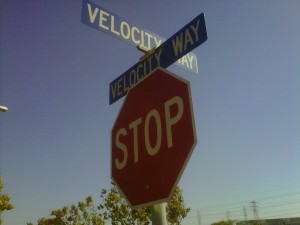
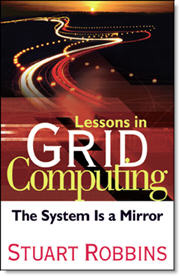
Comments